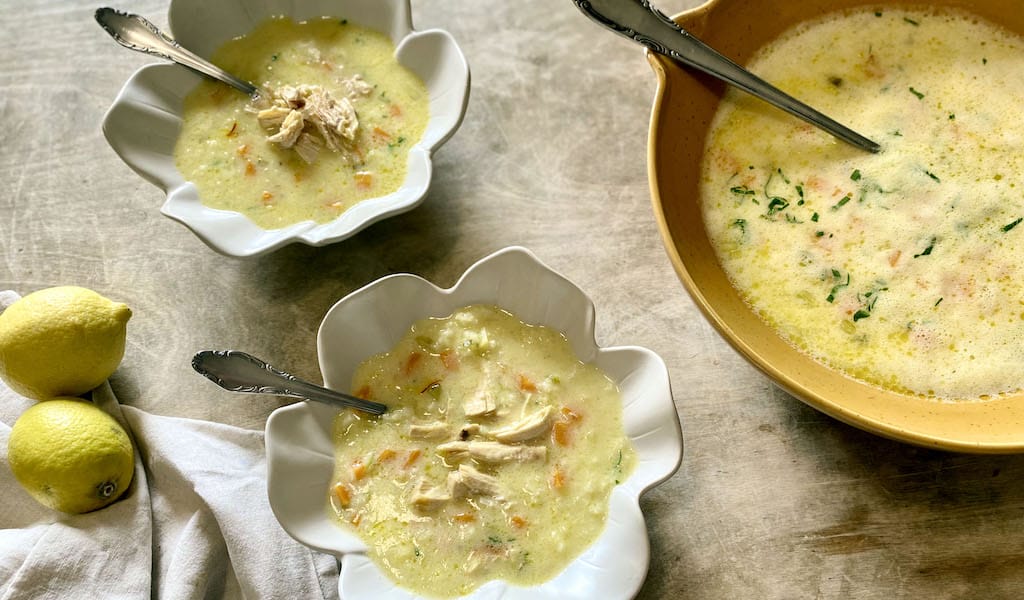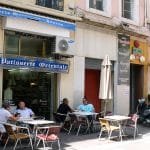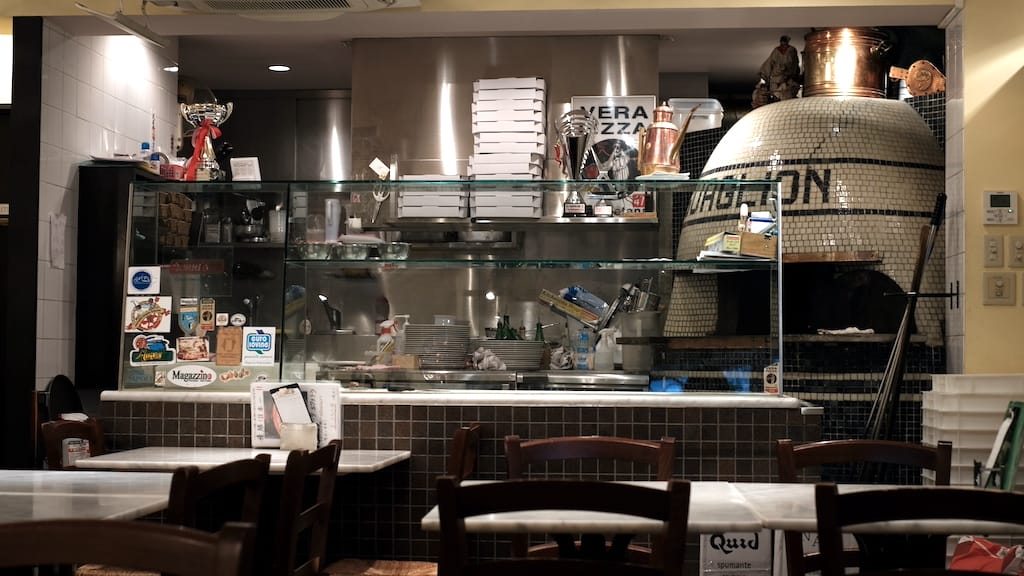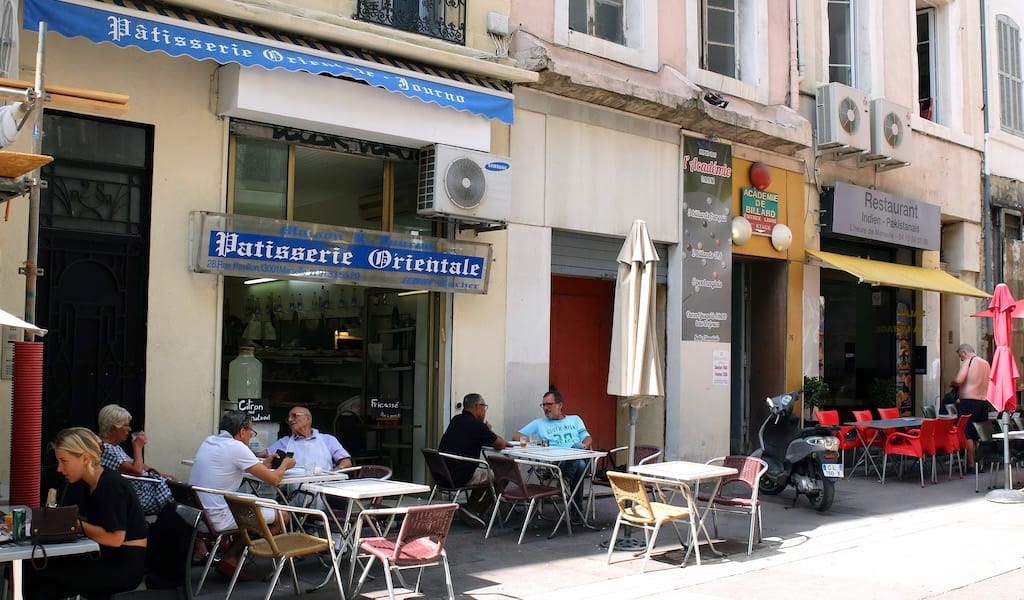I can’t think of a more comforting dish than soup. It can be as simple or complex as you wish, and as cheap or expensive as you can afford. Just open your fridge or pantry, and you’re sure to find something to turn into a liquid meal – vegetables, herbs, spices, meat, poultry, seafood, grains, legumes… the list goes on.
If you’re looking for a restoring bowl of soup in Greece, one of your best bets is a late-night restaurant (many operate round-the-clock) or diner. These spots, some of which are located near or inside central food markets, are perhaps best known for serving patsa (πατσά), tripe soup, a hangover helper as well as fuel for people performing hard labor early in the day – like market workers do.
But these types of restaurants in Greece also serve a variety of other soups, usually lined up in a steam table behind a glass display. Magiritsa (liver soup), beef soup, fish soup, bean soup and – my personal favorite – chicken avgolemono soup (kotosoupa avgolemono, κοτόσουπα αυγολέμονο) are among the most common choices you’ll find.
I have no words to describe how much I love this soup – it warms my body and heart equally. Avgolemono is one of the most classic Greek sauces, and its name describes what it’s all about: avgo (egg) and lemoni (lemon). What the name fails to capture is avgolemono’s versatility: It can be prepared into a thick sauce to top dolmades (stuffed grape leaves); served with vegetable stews or casseroles, like those made with artichokes or leeks, to amp up the flavor; added to meat stews and casseroles like lamb fricassée (lamb cooked with mixed seasonal greens and herbs) or pork with celery root; and, of course, included in soups.
Avgolemono makes soups creamy (thanks to the egg) and tangy (thanks to the lemon). Many cooks in Greece like to keep the soup as a broth and then, after adding rice or sometimes orzo, mixing in the avgolemono sauce at the end to thicken it up and add a bit of zing.
I like giving this soup some extra texture (apart from the rice) and color with vegetables. While some cooks prefer to use pasta instead of rice, I always choose the latter, just like my grandmother. I find that short-grain white rice, like the one we call glace (γλασέ) in Greece, works best for this soup.
For the chicken, I always buy a high-quality bird, preferably organic and from a small farm. Free-range chickens have less fat and are full of flavor, and for this recipe you need to boil it with skin and bones intact for the best result. For a bit of color and an elegant look, I add organic krokos kozanis (Greek red saffron, which has a protected designation of origin). Finally, I like my soup extra tangy so I use two lemons in my sauce. But if you want a more subtle taste, then feel free to add less.
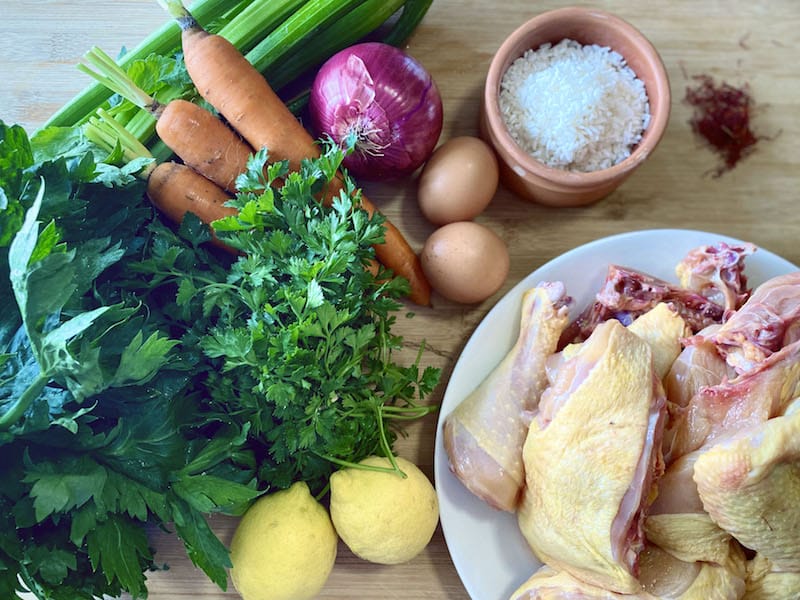
Chicken Avgolemono Soup (Kotosoupa Avgolemono)
2.5 liters water
1 large (1.8-2kg), preferably organic, free-range chicken with skin and bones (used whole or cut into portions)
1 bay leaf
1 large onion, peeled
5 black peppercorns
½ cup celery fronds (the leaves, whole)
2 large carrots, diced
1 celery rib, trimmed and chopped
1 small leek (white part only), chopped
150 gr short-grain white rice
Pinch of Greek red saffron filaments
Juice from 2 lemons (90 ml), or less according to taste
2 large eggs, preferably organic
Zest from 1 lemon, unwaxed and preferably organic
1 tbsp chopped parsley
Sea salt
Wash the chicken well and remove the giblets (I recommend trying to find another use for them rather than throwing them away). In a large heavy pot add the chicken along with the water, the onion (whole), salt, peppercorns, the bay leaf and celery fronds. Bring to a boil and then simmer for 50-60 minutes with the lid closed until your broth is nice and flavorful and the chicken is thoroughly cooked. Strain the broth and return it, clear, into the same pot. Add in the carrots, celery, leeks, saffron and the rice. Adjust seasoning if necessary and simmer with the lid closed for another 15-20 minutes until the vegetables and rice are nice and soft (but not mushy). When done open the lid and remove from heat.
Start making the avgolemono sauce. Separate the eggs in two bowls (whites and yolks). Beat the egg yolks with the lemon juice and zest. Whisk the egg whites into a light meringue (not too stiff). Gradually whisk the egg yolk mixture into the whites until incorporated (don’t over whisk at this point).
Carefully start adding (tablespoon by tablespoon) some of the hot soup broth into the egg and lemon sauce. Beware not to scramble the eggs! That’s why you must add very small quantities of the hot broth while whisking constantly. When you have added about 6-7 tablespoons of the broth into the egg and lemon sauce, it is ready to be poured into the soup. Mix it in away from the heat and add in the parsley. Remove the skin from the boiled chicken and shred or cut the meat into small pieces and add them into the soup. Serve warm and season with freshly ground black pepper.
To convert metric measurements to US and British kitchen units, click here.
Published on October 30, 2020
Related stories
December 6, 2022
Tokyo | By Florentyna Leow
TokyoTomoyuki Kohno seems like someone who would rather be making pizza than talking about pizza. He speaks slowly, probing the words as they emerge from his mouth as though he’s hand-writing them down; we struggle to hear him over the background music. Our conversation is pregnant with pauses. We’re at Pizzeria GG, a cozy basement-level…
November 2, 2021
Mexico City | By Culinary Backstreets
Mexico CityWe recently spoke with Mexican chef Pati Jinich about her new cookbook, Treasures of the Mexican Table: Classic Recipes, Local Secrets (Mariner Books; November, 2021). Pati is host of the James Beard Award winning and Emmy nominated public television series Pati's Mexican Table and has published two other cookbooks on Mexican cuisine – the first…
Discover the diverse flavors of Marseille on our walk!
October 3, 2019
MarseilleAt a typical pâtisserie orientale, the front window is often stacked with towers of sweets – honey-soaked visual merchandising to entice passersby to pop inside. Some pastry shops line their walls with colorful geometric tiles and Moorish arches, the icing on the Maghreb cake. Pâtisserie Orientale Journo goes for a decidedly more subtle approach. Though…







































